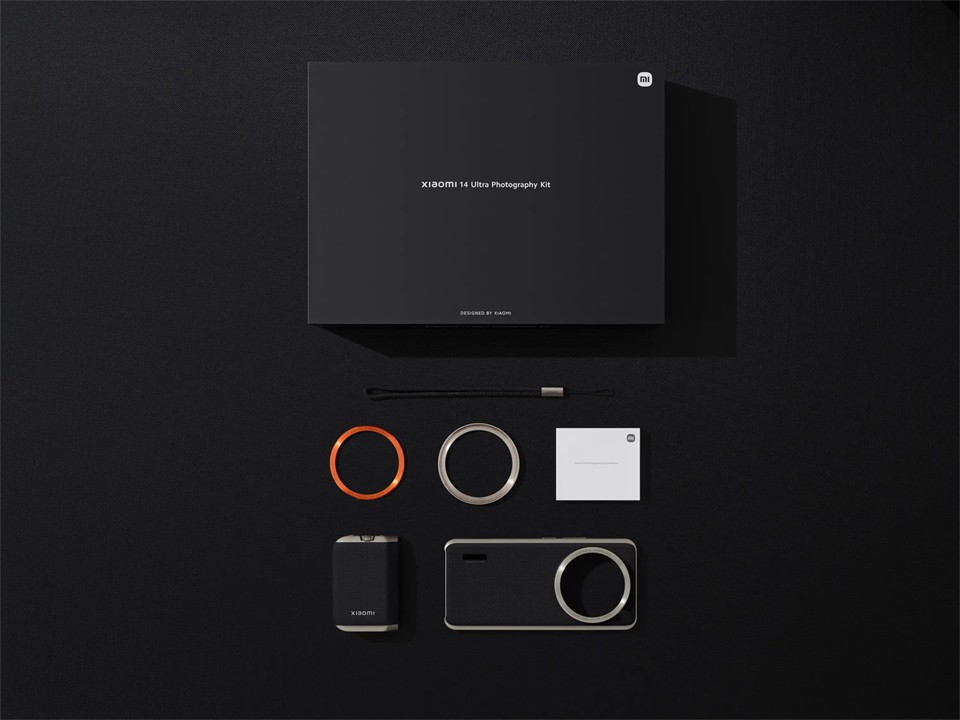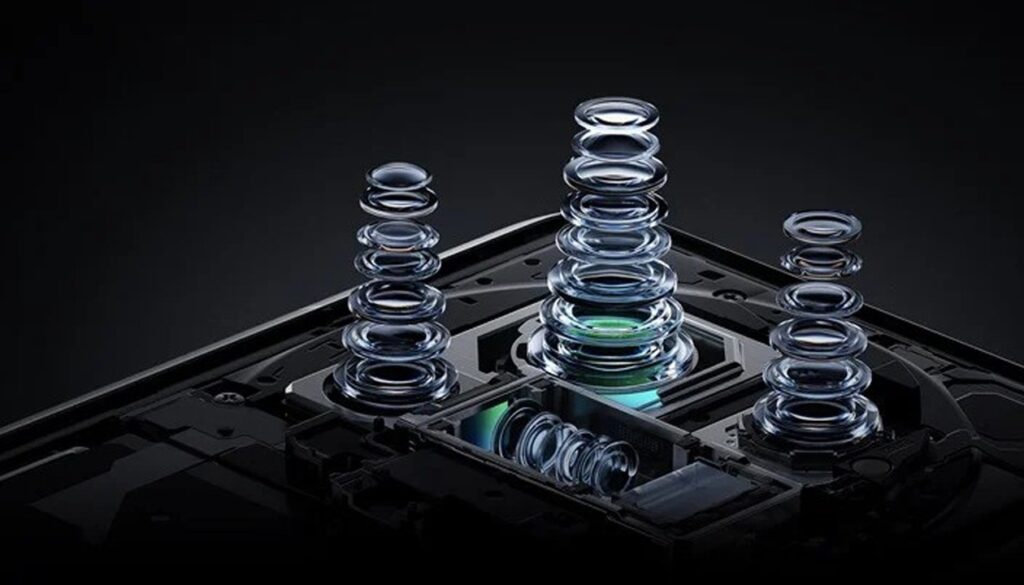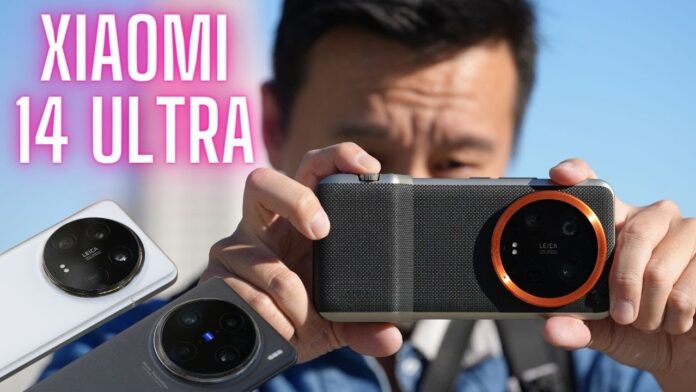The Xiaomi 14 Ultra debuted alongside the Xiaomi 14 at MWC 2024 and is the brand’s no-compromise smartphone that includes nearly every feature imaginable. The Xiaomi 14 Ultra will be priced at £1299 in the UK, placing it right up against the Samsung Galaxy S24 Ultra. No US release has been announced.
In the broad world of smartphones, each gadget has its own set of strengths and disadvantages. The Xiaomi 14 Ultra pitches itself as a flagship competitor, boasting outstanding features. Despite its intriguing characteristics, there are a few reasons why potential purchasers should reconsider purchasing this device. In this comprehensive review, we’ll look at the Xiaomi 14 Ultra’s camera performance, display quality, performance capabilities, multimedia features, building design, and battery life to provide an expert analysis of why this smartphone may not be the best option for everyone.
Price when reviewed: €1,499.90 | Check price at Amazon
Xiaomi 14 Ultra KEY FEATURES
Xiaomi has introduced the Xiaomi 14 Ultra, which is powered by the latest Qualcomm Snapdragon 8 Gen 3 chipset, giving it a bump in processing and maybe in overall user experience. In terms of camera specifications, the Xiaomi 14 Ultra maintains its photography relationship with Leica, with improvements over its predecessor. The Xiaomi 14 Ultra’s quad back camera features the latest generation 1-inch 50 Megapixel primary sensor, which is touted to have improved light-gathering capabilities.
The main camera’s lens also includes a 23mm equivalent focal length lens with a larger range of variable aperture than the 13 Ultra’s variable aperture, allowing more light to reach the sensor, which can be useful in low-light settings. In other major areas, the Xiaomi 14 Ultra’s 5000 mAh battery enables charging up to 90W, just like the 13 Ultra, but Xiaomi adds its HyperCharge technology to wireless charging, which supports 80W (compared to 50W in the 13 Ultra). The Xiaomi 14 Ultra’s display sports a peak brightness of 3000 nits, up from 2600 nits on the previous generation. We’re excited to see how it performs in sunlight. We’ll be testing the Xiaomi 14 Ultra’s camera, display, and battery in our labs shortly. Check back for updates on the device’s user experience!
Pros
- Top-Tier Camera Setup
- High-Quality Display
- Powerful Performance
Cons
- Exorbitant Price Tag
- Bulky and Heavy Design
- No 3.5mm Headphone Jack
XIAOMI 14 ULTRA UNBOXING
Little has changed in the presentation, and the 14 Ultra comes in the standard black thick cardboard box with plain Xiaomi lettering and a red Leica emblem for a pop of color. The internal package is entirely composed of paper, which is a gain.

The components include a 90W charger (the same as last year’s) and a proprietary USB-A-to-C connector. Xiaomi has also included a translucent plastic snap-on rear cover to protect the Ultra out of the box. It’s not very expensive, but anything is preferable to nothing, and the phone itself is said to be more durable than the previous edition. Let’s see what that is about.
CAMERA
The Xiaomi 14 Ultra’s quad-camera configuration, which includes 50MP lenses for wide-angle, telephoto, and ultrawide pictures, offers high image quality and adaptability. However, the sheer intricacy of the camera array may overwhelm inexperienced users, resulting in underutilization of its advanced functions.
I get to test practically every smartphone that is released, and I am an avid camera and street photographer who takes dozens of images outside each day. I believe that the Best Camera Phone crown has alternated between Vivo’s X series and Xiaomi’s Ultra series over the last three years. Oppo’s Find X series occasionally pushes for the title, but in terms of the entire camera package, it’s been Vivo or Xiaomi since 2021 (I don’t make these statements without evidence, by the way; my YouTube video contains dozens of real-time cameras tests on city streets).
These two phone series were the best for various reasons. Vivo, because it features excellent HDR software processing that never blows up highlights and a stunning portrait mode. Meanwhile, Xiaomi’s Ultra series features the greatest camera hardware on the market, with big sensors everywhere, as well as Leica optics and color science, the latter of which seeks to keep photos more natural, with deeper shadows and little processing.

Xiaomi’s latest phone, the 14 Ultra, does elevate the competition. In the last ten days, I’ve taken hundreds of images across three countries with this phone and the Vivo X100 Pro, and it’s been one of the most intense battles I’ve ever witnessed. In the end, I believe the Xiaomi 14 Ultra will be the greatest new camera phone on the market, beating out the Vivo X100 Pro. The decision boiled down to the fact that Xiaomi offers more zoom versatility and a main camera with a variable aperture, which allows for additional shooting alternatives. Before I proceed, let me show you two photos taken using the Xiaomi 14 Ultra.
The two photographs above are zoom shots, with the bird captured at 23X magnification and the dog at 5X zoom. These photos have incredible detail and sharpness. This is the level of the Xiaomi 14 Ultra camera. The camera hardware is the best a smartphone can provide right now. The main camera is the brand new Sony LYT-900, which has a 1-inch sensor and a physical shutter that opens and closes automatically based on the situation.
However, the zoom lenses are my particular favorites. You’ve already seen its impressive capabilities at very large zoom ranges, but I also enjoy using it at 75mm or 120mm for street photography and portraiture. The cameras’ quick apertures (f/1.8 and f/2.5, respectively) and 1/2.5-inch sensor enable them to capture fast and clean pictures.
As previously stated, I believe the Xiaomi 14 Ultra accomplishes just enough to edge out the Vivo X100 Pro as the best camera phone available today, but it’s a close call. The Vivo still captures superior HDR in many circumstances, but I believe the 14 Ultra has a greater ceiling for individuals who enjoy experimenting with camera settings. I’ve included several comparative films and photographs in the video below.
DESIGN AND SCREEN
Even though this phone is more expensive than the Xiaomi 14, the two have distinct design aesthetics, with the Ultra having a more visually appealing overall appearance. The huge camera housing on the back is the main design piece, taking up the majority of the phone’s top half. I don’t think this appearance will appeal to everyone, but it contributes to the Xiaomi 14 Ultra’s dual purpose as a camera and a phone. Xiaomi has modified the design of the Xiaomi 13 Ultra, reducing the large dip that previously resided behind the camera bump and making everything much more flat. It’s a little modification that has a big impact on usability.

I still find it difficult to find a comfortable position to hold the Xiaomi 14 Ultra owing to the camera’s size. My fingers instinctively encroached on the sensor because there wasn’t enough space elsewhere, and it was difficult to find a place for them to sit. This also caused the exterior camera glass to become quite smeared, quickly. Surrounding the camera is a faux leather finish in either white or black, which provides texture and enhances the small camera appeal. I love these finishes since they are more durable than glass and do not show fingerprints.
Another noteworthy difference from the 13 Ultra I tested last year is that the screen is now mostly flat, with no major curves around the borders. There is still a little slant on the screen and back, but it is much closer to the Samsung Galaxy S24 Ultra than the OnePlus 12. This update appeals to me because it minimizes glare on the display’s edges and makes it more user-friendly in general.
The screen is excellent. It’s an OLED screen with a 1440p resolution, LTPO technology with a refresh rate that can range from 1 to 120Hz, and all of the HDR formats you could want: HDR10+, HLG, Dolby Vision. I was using the phone in a bright area with numerous spotlights, and the display did an excellent job of increasing the brightness levels to battle the glare.
HOW’S THE PERFORMANCE?
The Xiaomi 14 Ultra, powered by the Qualcomm Snapdragon 8 Gen 3 engine and up to 16GB of RAM, provides great performance and can easily handle demanding activities. However, the high RAM configuration may be overkill for most users, resulting in extra expenses.
The Xiaomi 14 Ultra is powered by the Snapdragon 8 Gen 3 chipset, which is also found in the Galaxy S24 Ultra, Find X7 Ultra, Magic6 Pro, and the majority of other high-end phones this year, whether camera-centric or not. The processor is now a known performer, and it has shown to be a significant improvement over last year’s top-tier Qualcomm SoC – as it should be.
The SD 8 Gen 3 is built on a 4nm process and has an octa-core CPU in a 1+3+2+2 architecture, with a prime Cortex-X4 core clocked at 3.3GHz. The GPU is the Adreno 750. The 14 Ultra for international markets is available in a single configuration with 16GB of LPDDR5X RAM and 512GB of UFS 4.0 storage (our review device has storage speeds that are commensurate with the UFS 4.0 standard). The Chinese 14 Ultra will also be available in 12GB/256GB and 16GB/1TB configurations.
In benchmark tests, the 14 Ultra performed admirably, finishing in the top half of the class without sticking out as an overachiever. It performed better under CPU demands, but the GPU results pushed it down the rankings. The Performance option in the battery settings does not affect benchmark scores.
Under sustained pressure, the Performance mode did not affect the results of the 3DMark Wild Life stress test, and 68% stability isn’t bad for a high-end smartphone. The initial scores were a few percentage points lower than the top, but the steadiness is still welcome.
In the CPU Throttling test, the Performance mode had an unexpected effect: peak performance was lower than in the normal Balanced mode. In both modes, however, the Xiaomi demonstrated superb performance with only slight thermal throttling.
Buy it if...
- Excellent camera system, nearly faultless.
- Particularly good video recording.
- High-level performance under sustained load.
- Unique accessory package (if optional and not particularly inexpensive).
Don't buy it if…
- Even for what it is, the price is high, with little possibility of further discounts.
- The battery life is below average.
- Selfie camera produces medium-quality stills and lacks autofocus.
FULL SPECIFICATION
Network | Technology | GSM / CDMA / HSPA / EVDO / LTE / 5G |
Launch | Announced | 2024, February 22 |
Status | Available. Released 2024, February 22 | |
Body | Dimensions | 161.4 x 75.3 x 9.2 mm (6.35 x 2.96 x 0.36 in) |
Weight | 219.8 / 224.4 / 229.5 g (7.76 oz) | |
Build | Glass front (Shield Glass), glass or eco leather back, titanium (grade 5) or aluminum alloy frame | |
SIM | Dual SIM (Nano-SIM, dual stand-by) | |
IP68 dust/water resistant (up to 1.5m for 30 min) | ||
Display | Type | LTPO AMOLED, 68B colors, 120Hz, Dolby Vision, HDR10+, 1000 nits (typ), 3000 nits (peak) |
Size | 6.73 inches, 108.9 cm2 (~89.6% screen-to-body ratio) | |
Resolution | 1440 x 3200 pixels, 20:9 ratio (~522 ppi density) | |
Protection | Xiaomi Shield Glass / Xiaomi Longjing Glass | |
Platform | OS | Android 14, HyperOS |
Chipset | Qualcomm SM8650-AB Snapdragon 8 Gen 3 (4 nm) | |
CPU | Octa-core (1×3.3 GHz Cortex-X4 & 3×3.2 GHz Cortex-A720 & 2×3.0 GHz Cortex-A720 & 2×2.3 GHz Cortex-A520) | |
GPU | Adreno 750 | |
Memory | Card slot | No |
Internal | 256GB 12GB RAM, 512GB 16GB RAM, 1TB 16GB RAM | |
UFS 4.0 | ||
Main Camera | Quad | 50 MP, f/1.6-f/4.0, 23mm (wide), 1.0″-type, 1.6µm, multi-directional PDAF, Laser AF, OIS 50 MP, f/1.8, 75mm (telephoto), 1/2.51″, 0.7µm, dual pixel PDAF (10cm – ∞), OIS, 3.2x optical zoom 50 MP, f/2.5, 120mm (periscope telephoto), 1/2.51″, 0.7µm, dual pixel PDAF (30cm – ∞), OIS, 5x optical zoom 50 MP, f/1.8, 12mm, 122˚ (ultrawide), 1/2.51″, 0.7µm, dual pixel PDAF TOF 3D, (depth) |
Features | Leica lenses, Dual-LED flash, HDR, panorama, 67mm filter ring holder (optional) | |
Video | 8K@24/30fps, 4K@24/30/60/120fps, 1080p@30/60/120/240/480/960/1920fps, gyro-EIS, Dolby Vision HDR 10-bit rec. (4K@60fps, 1080p) | |
Selfie camera | Single | 32 MP, f/2.0, 22mm (wide), 1/3.14″, 0.7µm |
Features | HDR, panorama | |
Video | 4K@30/60fps, 1080p@30/60fps, gyro-EIS | |
Sound | Loudspeaker | Yes, with stereo speakers |
3.5mm jack | No | |
24-bit/192kHz Hi-Res & Hi-Res Wireless audio | ||
Comms | WLAN | Wi-Fi 802.11 a/b/g/n/ac/6e/7, tri-band, Wi-Fi Direct |
Bluetooth | 5.4, A2DP, LE, aptX HD, aptX Adaptive, LHDC | |
Positioning | GPS (L1+L5), GLONASS (L1), BDS (B1I+B1c+B2a), GALILEO (E1+E5a), QZSS (L1+L5), NavIC (L5) | |
NFC | Yes | |
Infrared port | Yes | |
Radio | No | |
USB | USB Type-C 3.2 Gen 2, DisplayPort, OTG | |
Features | Sensors | Fingerprint (under display, optical), accelerometer, proximity, gyro, compass, color spectrum, barometer |
Two-way satellite communication | ||
Battery | Type | 5000 mAh, non-removable – International5300 mAh, non-removable – China only |
Charging | 90W wired, PD3.0, QC4, 100% in 33 min (advertised) 80W wireless, 100% in 46 min (advertised) 10W reverse wireless | |
Misc | Colors | Black, Blue, White, Titanium Gray |


